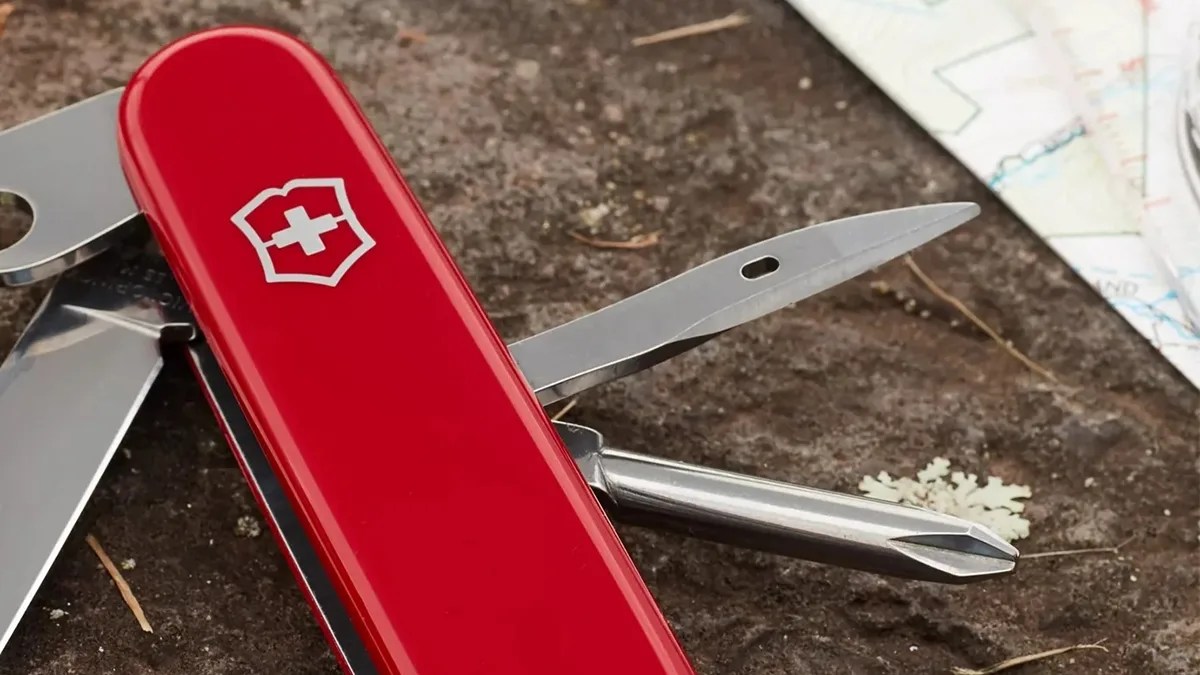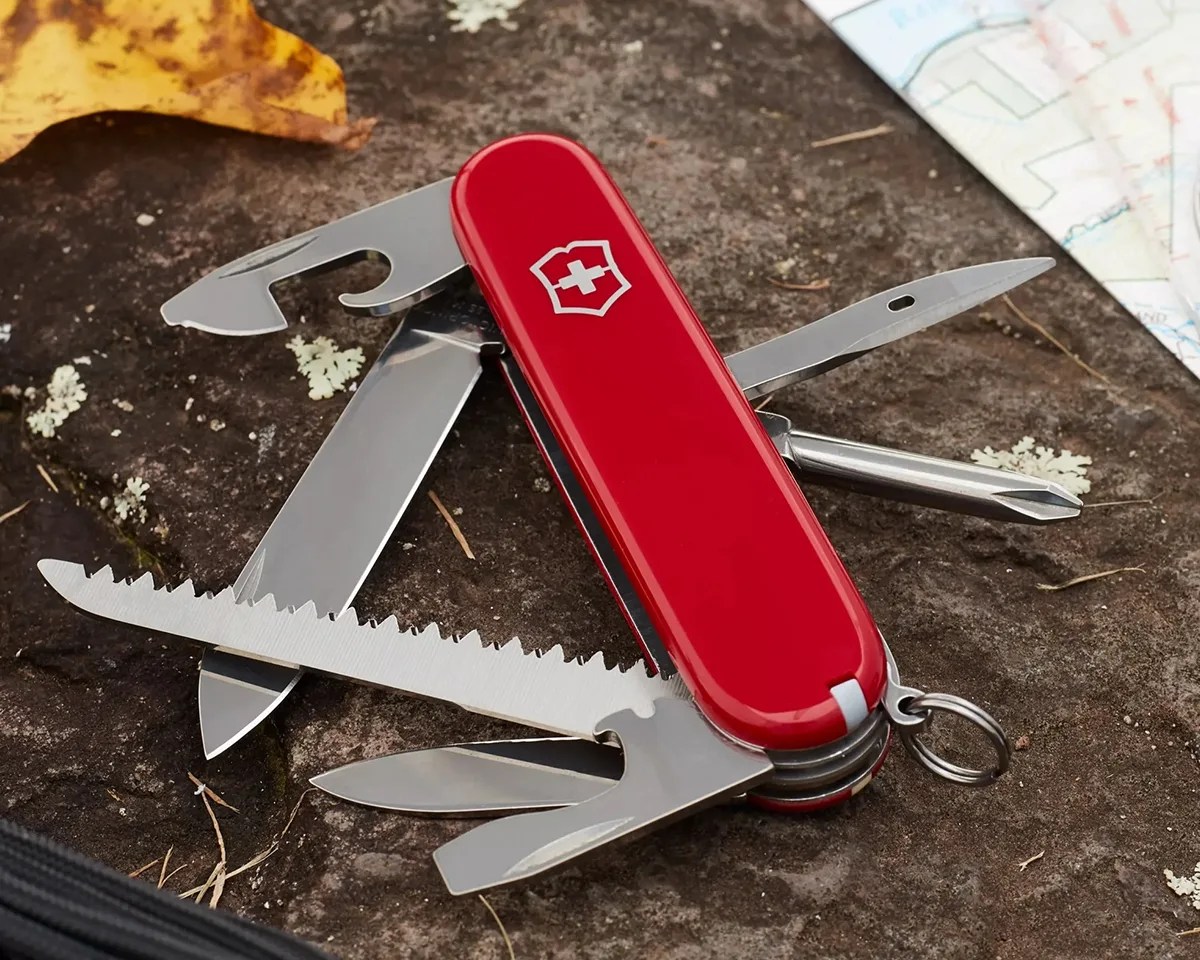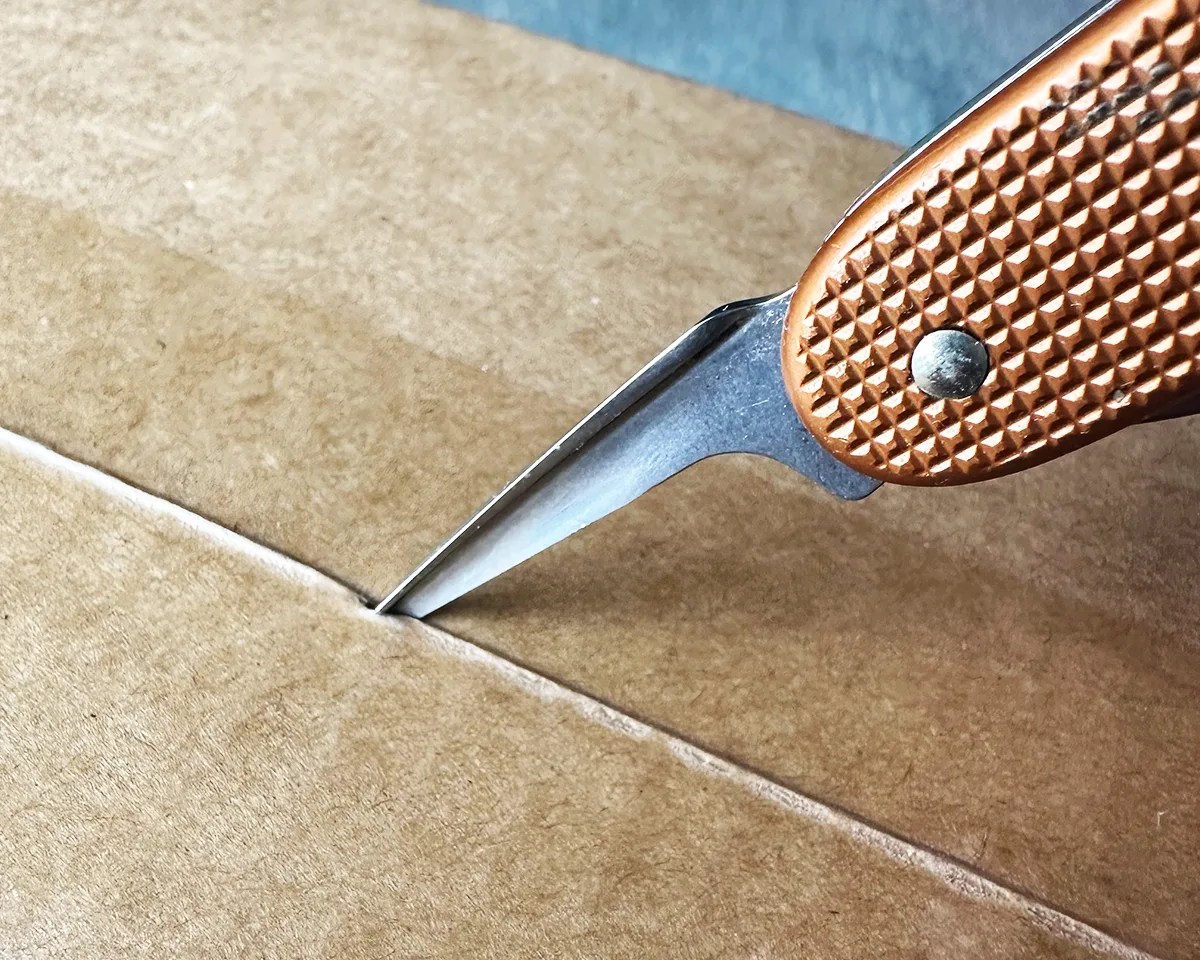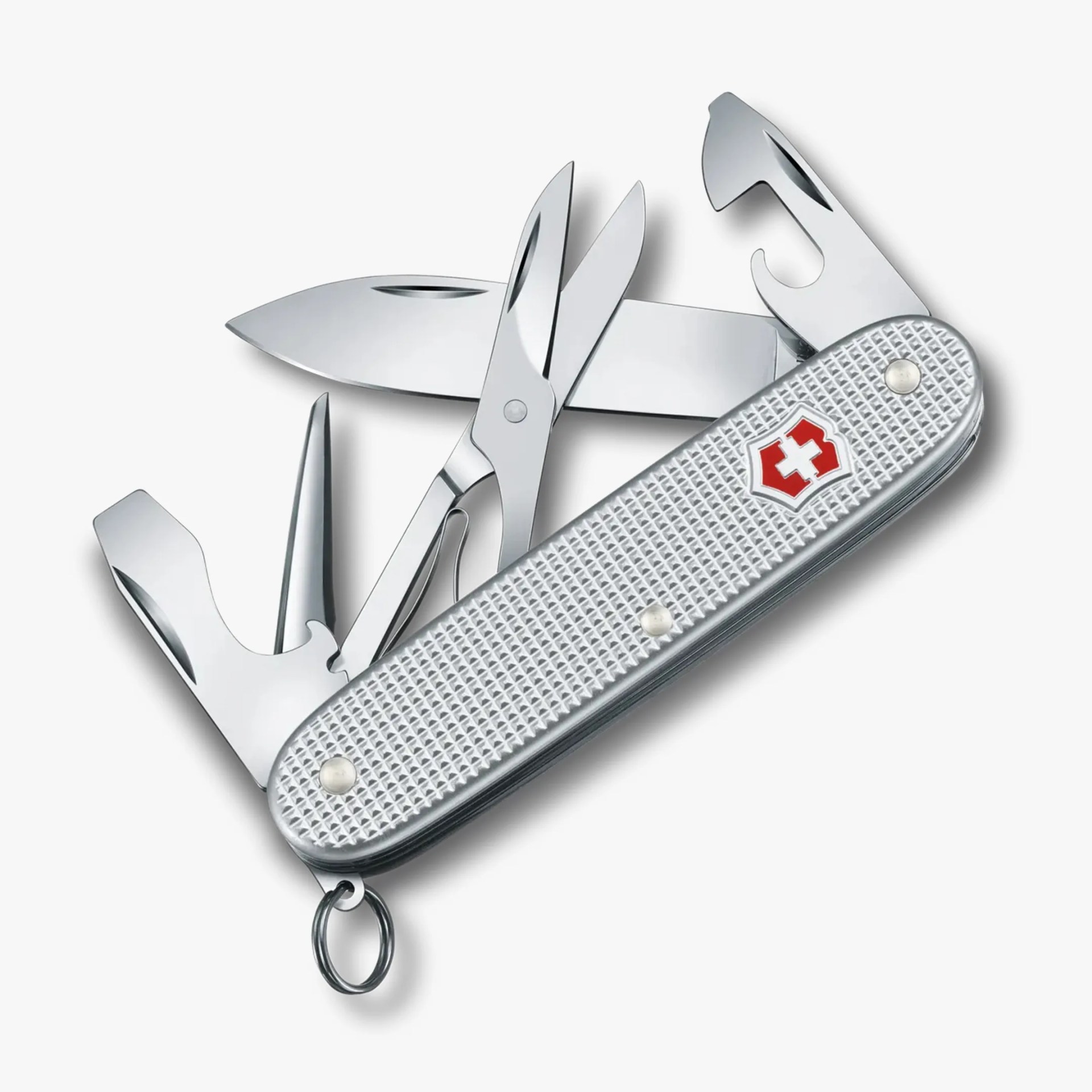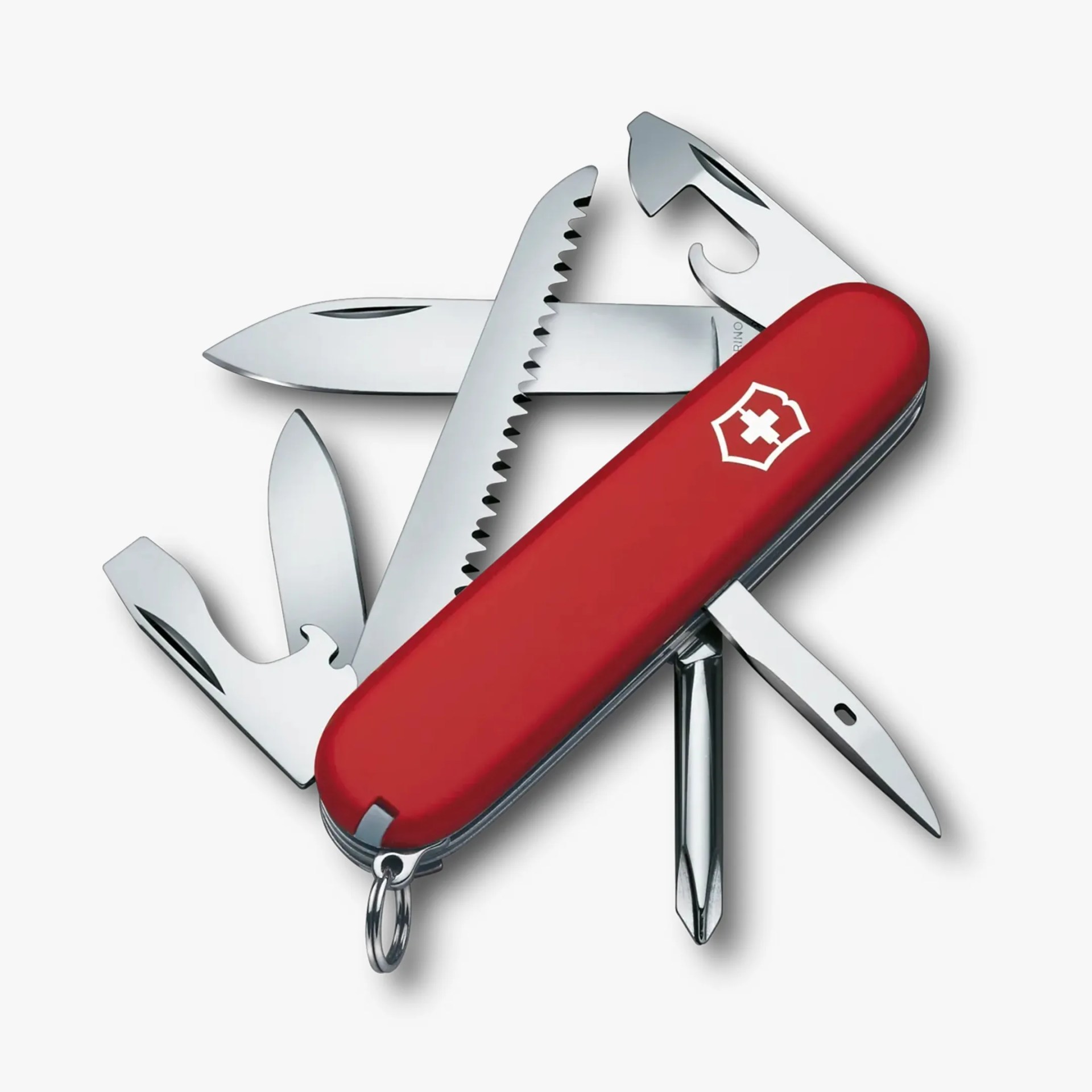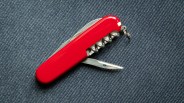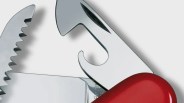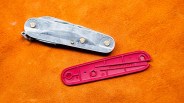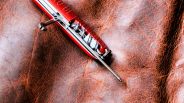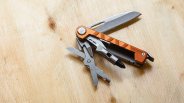Swiss Army Knives are loaded with valuable tools—probably their most significant benefit. Yet, while many of their tools were designed for express purposes, they often have sneaky value outside those purposes.
Such is the case with the humble awl (also known as a reamer). Although created to help with things like leatherworking and scoring wood or metal, this device works better than a knife blade for one of EDC’s most common activities.

Awl in the family
Today, dozens of Swiss Army Knife models feature an awl or reamer tool. It’s one of the most common gizmos on SAKs. In fact, its origins go back to the oldest versions of these multi-tools.
It can also be incredibly useful, which likely explains why it’s so common and still in use today. For instance, the earliest versions (awls with threading holes) can be used to make in-the-field repairs to outdoor gear (read more about that here).
Awls and reamers can also assist in other repair functions. For instance, they can enlarge, straighten and smooth preexisting holes in materials.
